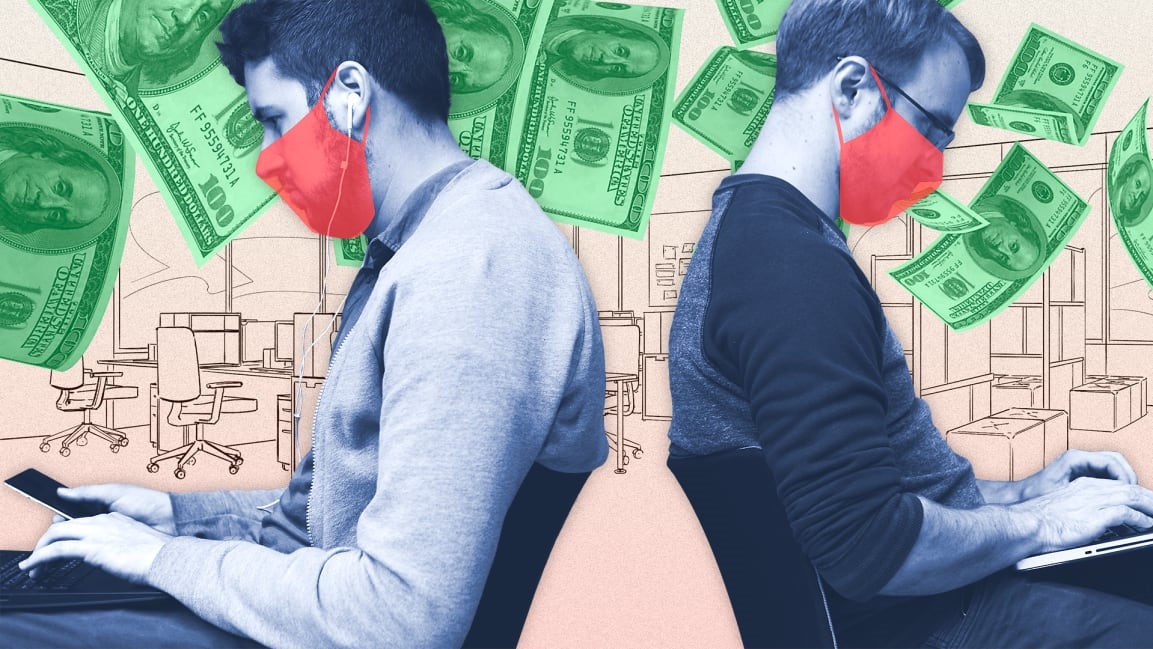Planning a post-pandemic office? Here’s how much it will cost
The pandemic has pushed companies around the world to rethink their offices. Whether they’re shifting to hybrid work models or eliminating dedicated desks, offices are likely to look a lot different than they did in early 2020.
The changes won’t be cheap. According to real estate company JLL’s 2021 U.S. and Canada Office Fit Out Guide, the pandemic is significantly changing the way that offices are laid out and set up, from floorplans to technology to furniture. The construction costs are changing, too.
On the higher end of the spectrum, the guide suggests office fit outs can range up to an average cost of $243 per square foot.
These costs are related to three major trends reshaping office spaces, according to JLL. The most immediate is that some companies will have a partially remote workforce with many employees only coming into the office a few days per week or month. Shifting the interior spaces of offices for this lower headcount will require new floorplans, furniture, and meeting spaces. “The share of budget spent on workstations, which in the past would have filled most open areas of an office, is transitioning to more custom furniture solutions that adapt for different types of work, by different users, who are in the office on different days,” says Henry D’Esposito, JLL Construction Research Lead.
Related to those changes, offices will likely be investing more in technologies that enable a hybrid work style, including better audio-visual equipment and more spaces for private and group video conferences. “Beyond just adding technology into existing room designs, the next step is designing the space around the technology,” says D’Esposito. “One example of this is virtual-first conference spaces that treat the experience for video participants as the primary goal, rather than an afterthought.”
Given the pandemic’s major impacts on mental and physical health, more companies are expected to invest in wellness and sustainability amenities, like better lighting, better air ventilation, and access to outdoor spaces.
Of course the overall cost depends on what each company wants to do, and how extensively they redesign. JLL breaks down the possible office changes into a matrix of design styles and material quality. The guide is based on data from more than 3,000 buildings in the U.S. and Canada.
For example, the guide suggests that a progressive, pandemic-influenced design that replaces individual desks and enclosed offices with bench style seating and a variety of smaller spaces for collaboration and meetings could cost from $155 to $225 per square foot, depending on the quality of materials, furniture, and technology. For a typical 10,000-square-foot office, that adds up to $2.25 million. A more traditional office design that sticks to a higher percentage of private spaces and larger conference rooms would be slightly more expensive, with per square foot costs ranging from $168 to $243.
The breakdown varies from the soft costs of design to the hard costs of acquiring new furniture and fixtures. But even if companies opt for a more traditional style, with dedicated desks and offices, JLL’s guide suggests that outfitting an office going forward will be more expensive than in the past. Overall construction costs are projected to rise between 3.5% and 5.5% in 2021, according to JLL’s research. As companies plan the ways they adapt to this new way of working, the investments made now could help make offices more able to evolve over time.
“By building flexibility into a space, the design can be adaptable for the next 10 years or more, and inclusive of different working styles,” D’Esposito says.
(17)



